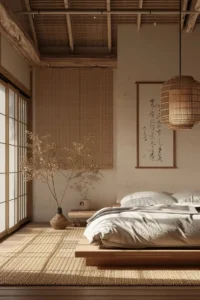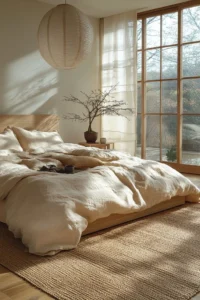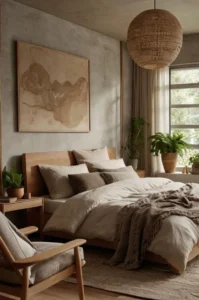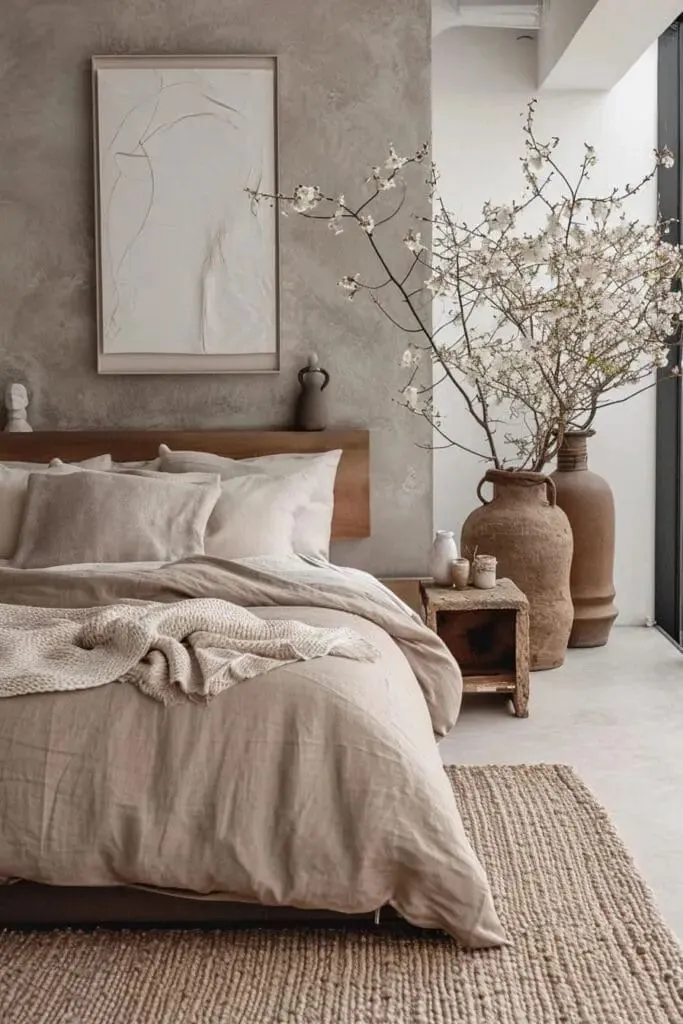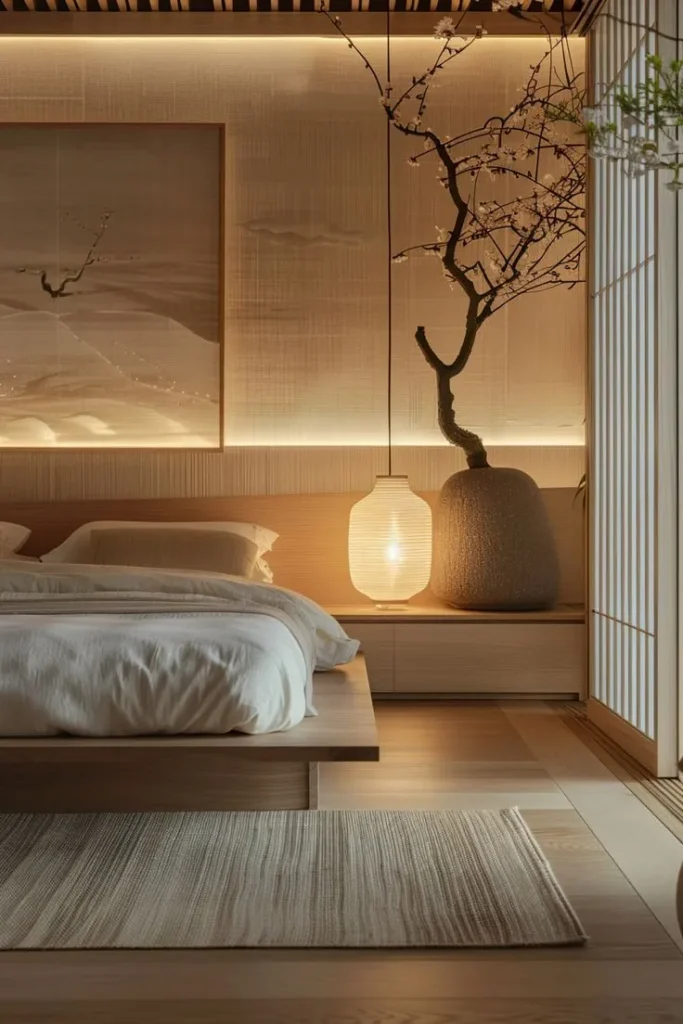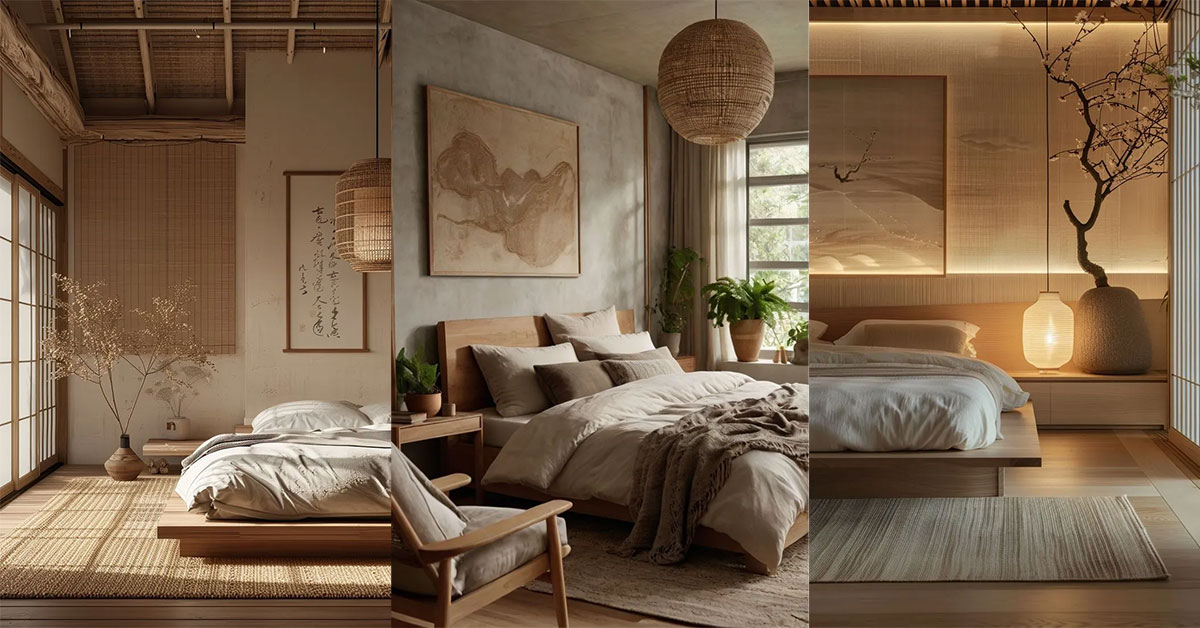
Japandi Minimalist Bedroom Ideas for 2025
Imagine walking into a bedroom that instantly makes you feel at peace—a space where minimalism meets warmth, and functionality blends effortlessly with beauty. This is the essence of Japandi, a harmonious fusion of Japanese elegance and Scandinavian simplicity.
In 2025, Japandi continues to redefine interior design, especially in bedrooms. With its calming neutral tones, natural textures, and focus on balance, this style is perfect for anyone seeking a serene sanctuary. Whether you’re redesigning from scratch or adding subtle touches, Japandi offers endless inspiration to transform your bedroom into a tranquil retreat. Ready to explore the world of Japandi?
What Defines Japandi Style in Bedrooms?
Japandi combines the understated elegance of Japanese aesthetics with the cozy minimalism of Scandinavian design. In a Japandi-inspired bedroom, you’ll find clean lines, neutral tones, and a focus on natural materials like wood and bamboo. This style prioritizes functionality without sacrificing beauty, making every element of the room intentional. Think of a low-profile bed framed by warm wooden tones, paired with soft linen bedding in beige or gray. The emphasis is on creating a calming environment, free of clutter, where simplicity speaks volumes.
Color Palette for a Japandi Bedroom
The Japandi color palette revolves around muted, earthy tones that promote relaxation and balance. Soft shades like beige, taupe, and cream dominate, accented by darker tones such as charcoal, deep green, or navy for contrast. The secret lies in keeping the palette harmonious, with no overly bright or clashing colors. For instance, walls painted in off-white or light gray create the perfect backdrop for natural wooden furniture and textile accents in shades of dusty pink or sage. Incorporating black in small details, like frames or lamp bases, adds a subtle edge to the tranquil aesthetic.
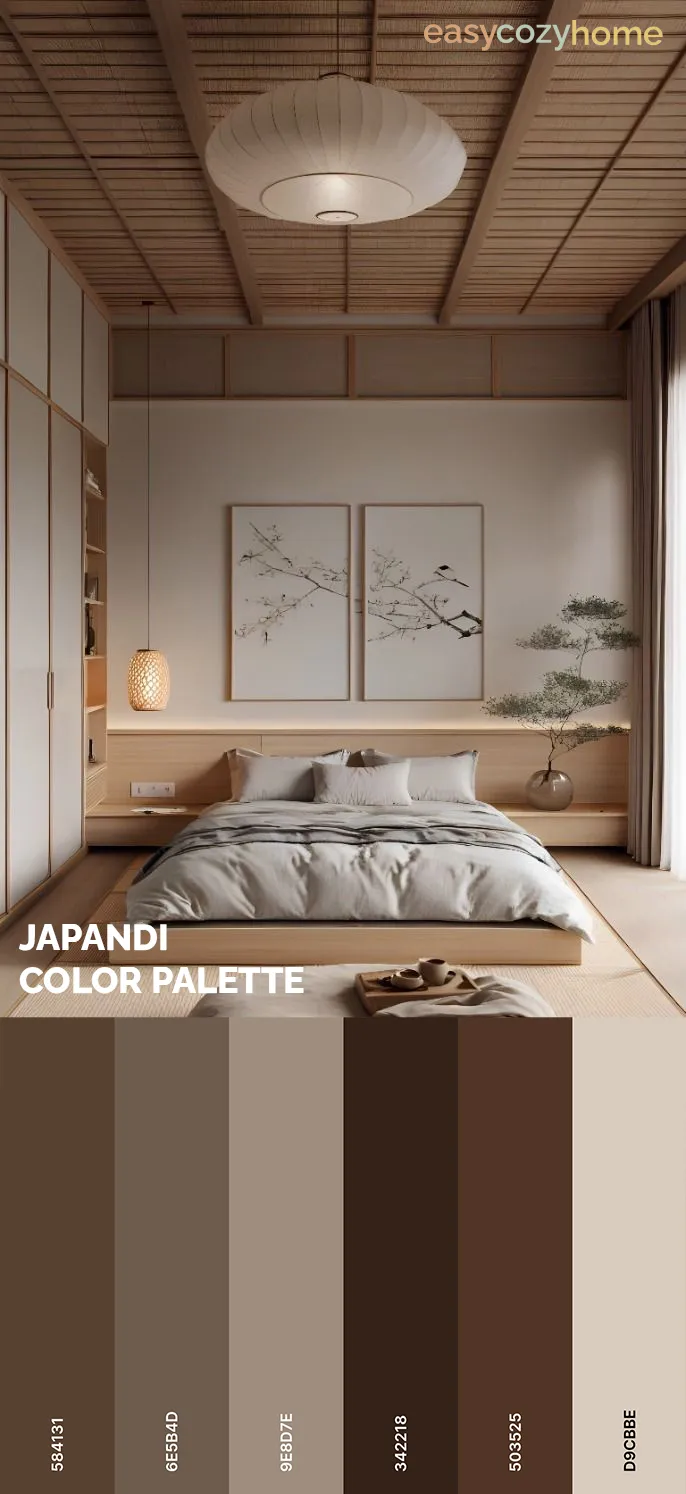
Essential Furniture for a Japandi Bedroom
Furniture in Japandi design focuses on simplicity, functionality, and sustainability. A low-profile bed, inspired by traditional Japanese futons, often becomes the centerpiece of the room. Opt for wooden frames with visible grains to highlight the natural materials. Nightstands, dressers, and wardrobes are sleek and minimal, avoiding ornate details. Scandinavian influences bring in functional storage solutions, like multi-purpose furniture with hidden compartments. Incorporating a bench or stool made of bamboo or oak near the bed enhances the space’s organic feel while remaining practical.
Textures and Materials: The Japandi Balance
Japandi bedrooms thrive on the juxtaposition of contrasting textures. Smooth, polished wood surfaces pair beautifully with soft, natural fibers like linen, cotton, or wool. For bedding, opt for crisp linen sheets and throw blankets in knitted or woven fabrics. Bamboo or rattan light fixtures and furniture can bring an earthy dimension, while wool rugs add warmth underfoot. Stone accents, such as a minimalist vase or a concrete planter, provide a subtle nod to Japanese zen gardens. The balance of these elements makes the room feel cohesive yet dynamic.
Lighting: Soft and Natural for Japandi Bedroom Style
Lighting in a Japandi bedroom is soft, warm, and focused on creating a serene atmosphere. Natural light is key, so large, uncovered windows or sheer curtains work best. For artificial lighting, choose fixtures with clean, understated designs. Paper lanterns, pendant lights with wooden details, or rattan lampshades evoke the Japanese influence, while Scandinavian design is evident in floor lamps or wall sconces with matte finishes. Layered lighting, combining ambient, task, and accent lights, ensures functionality while maintaining the cozy, intimate feel.
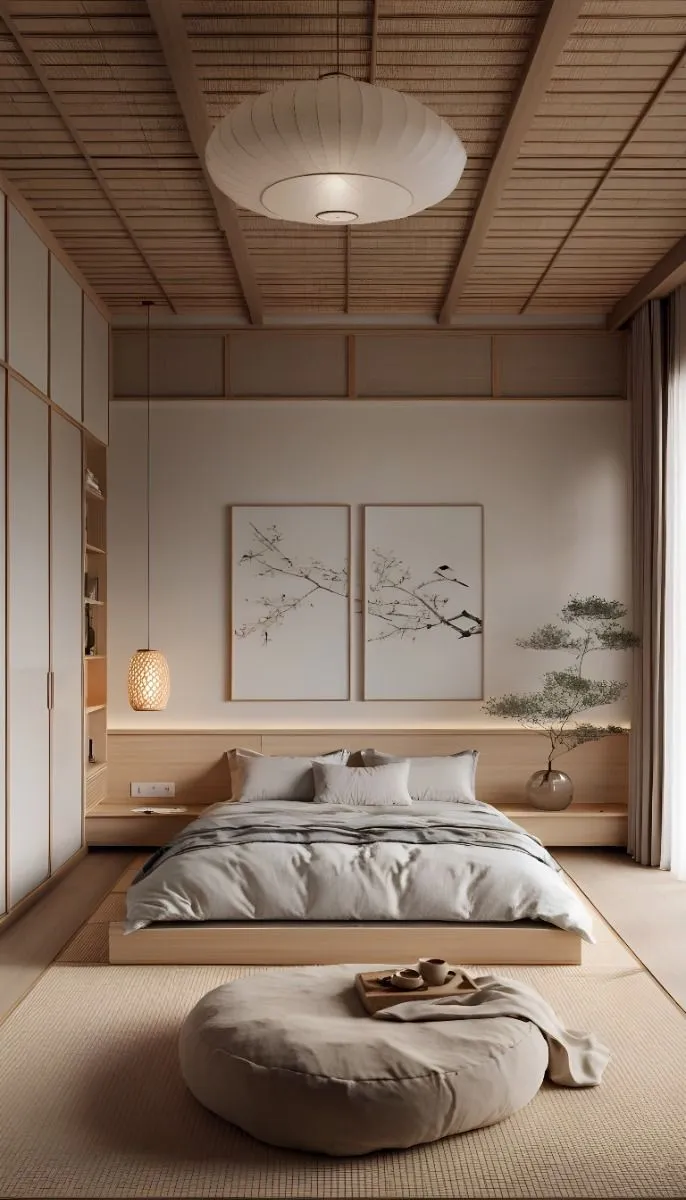
Decorative Elements: Minimalist Yet Impactful
Decoration in Japandi style follows the mantra “less is more.” A few carefully chosen items, such as ceramic vases, handmade pottery, or a small bonsai tree, can add character without overwhelming the space. Wall art should be minimal, featuring abstract designs or nature-inspired motifs in muted tones. A single statement piece, like a large textile wall hanging or an oversized mirror with a simple frame, can elevate the room. Avoid clutter by limiting the number of decorative elements, ensuring each piece serves a purpose or tells a story.
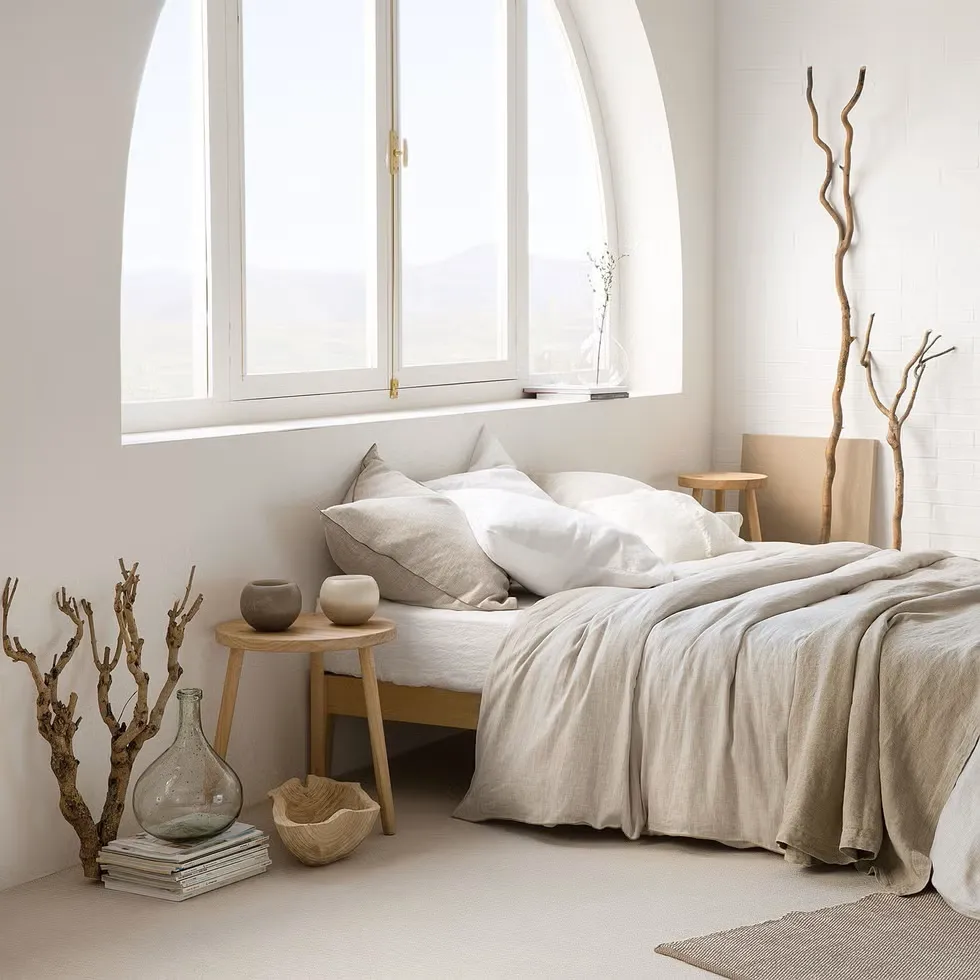 A bedroom filled with natural light through an arched window highlights Japandi’s emphasis on spaciousness and simplicity. Minimal decor like wooden side tables and sculptural branches serve as understated accents, while the neutral-toned bedding enhances the room’s tranquil vibe. The use of asymmetry, particularly with decor placement, reflects the Japanese influence on the style.
A bedroom filled with natural light through an arched window highlights Japandi’s emphasis on spaciousness and simplicity. Minimal decor like wooden side tables and sculptural branches serve as understated accents, while the neutral-toned bedding enhances the room’s tranquil vibe. The use of asymmetry, particularly with decor placement, reflects the Japanese influence on the style.
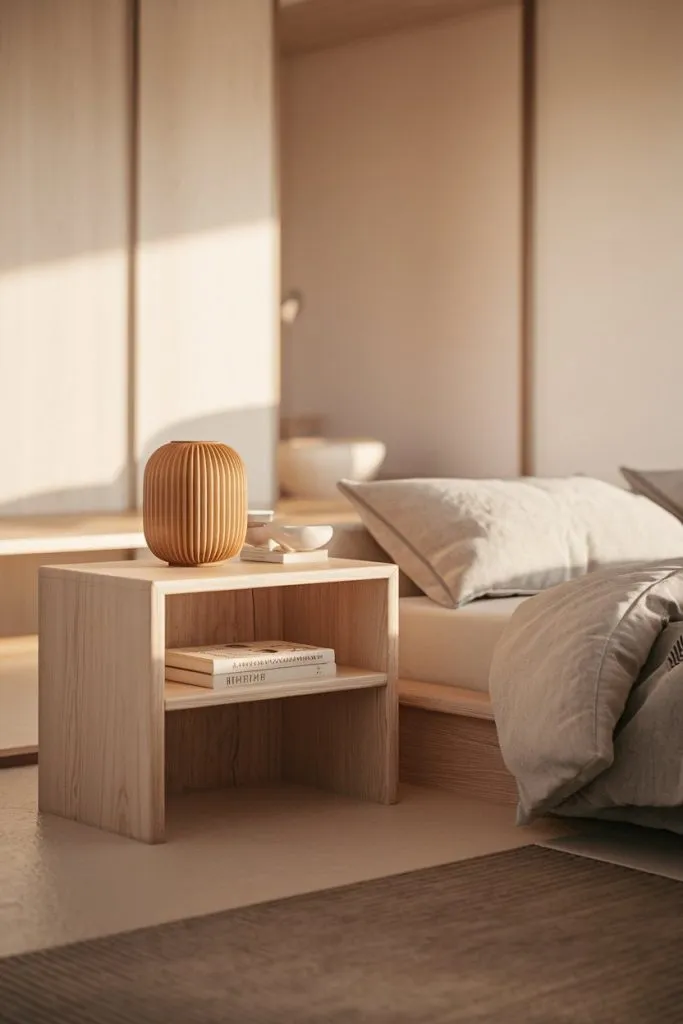
Focused on bedside simplicity, this setup emphasizes Japandi’s functional elegance. The light wood nightstand houses essential items, blending seamlessly with the soft beige bedding. The ridged ceramic vase adds depth through texture while adhering to the room’s muted tones, offering a perfect balance of minimalism and interest.
Incorporating Greenery: Zen and Scandinavian Influence
Plants play a significant role in Japandi bedrooms, bringing life and a sense of calm to the space. Choose plants with clean lines and a sculptural quality, like fiddle-leaf figs, snake plants, or peace lilies. Japanese bonsai trees or bamboo stalks add authenticity to the design. Keep planters simple and natural—ceramic, stone, or wooden pots work best. Placing greenery strategically, such as on a low shelf or bedside table, ensures the room feels fresh and connected to nature without feeling crowded.
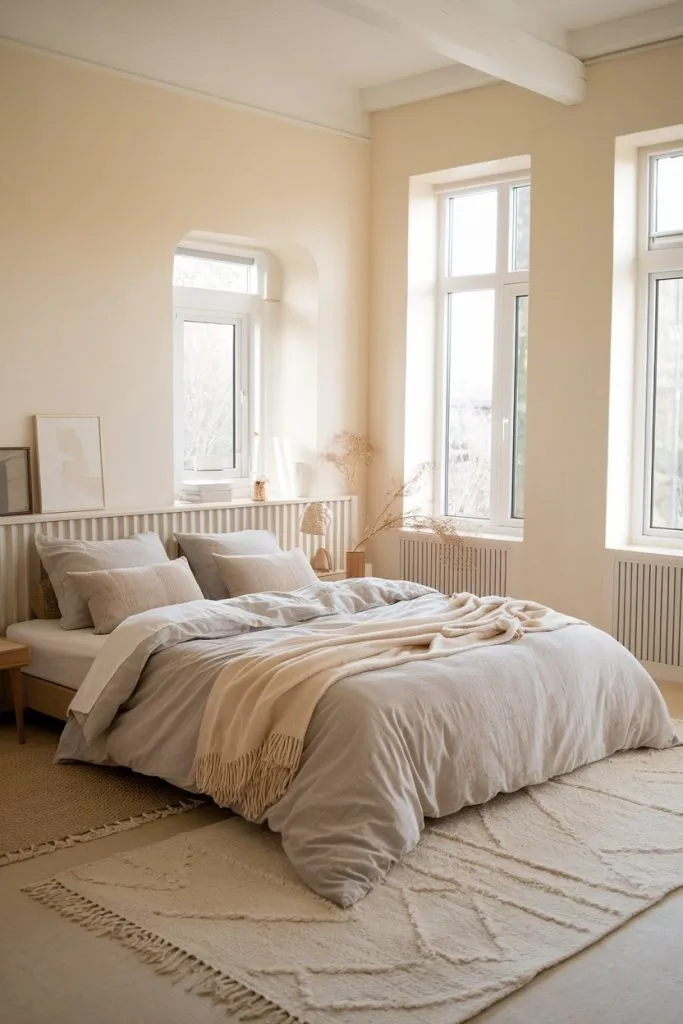
This room highlights Japandi’s hallmark neutral palette and layered textures. A cozy area rug beneath the bed complements the layered bedding, combining elements of Scandinavian comfort with Japanese restraint. The large windows flood the room with light, creating an airy, calming environment. Subtle decorative accents like dried flowers add depth while maintaining simplicity.
Storage Solutions for a Clutter-Free Space
Japandi thrives in organized, clutter-free environments, making storage solutions essential. Built-in wardrobes with sliding doors or minimal handles help maintain the room’s clean lines. Scandinavian-style storage benches or under-bed drawers offer practical options for stashing away extra bedding or clothing. Open shelving with neatly arranged baskets in natural fibers like rattan keeps everyday items accessible while blending seamlessly into the room’s aesthetic. Decluttering is key, ensuring every item has a designated place.



Achieving Harmony: The Japandi Philosophy
At its core, Japandi is about balance and harmony. This extends beyond the physical elements of the room to how the space feels and functions. Avoid overcrowding furniture or decor, leaving plenty of open space to breathe. A well-designed Japandi bedroom promotes relaxation and mindfulness, embracing a slower, more intentional way of living. By prioritizing quality over quantity, every detail contributes to the overall sense of calm and order, making the room a true sanctuary.

